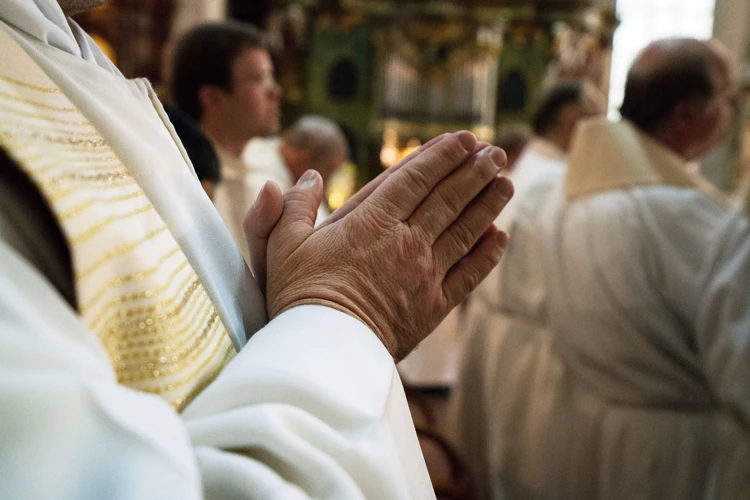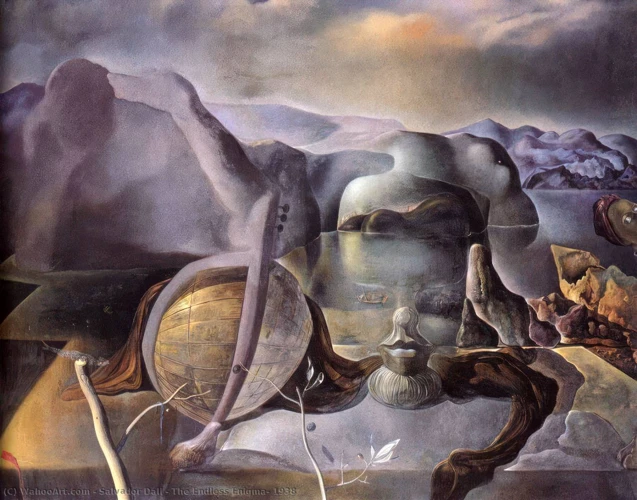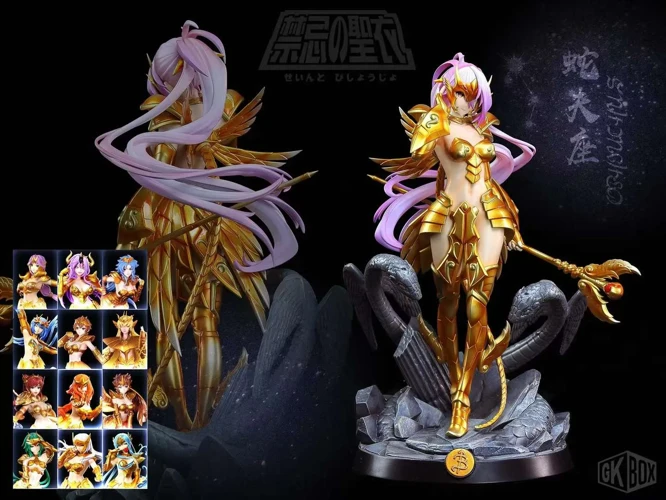Mesopotamian mythology was at the heart of daily life in ancient Mesopotamia, a region located between the Tigris and Euphrates rivers. The rich and complex mythology shaped religious practices, social organization, artistic expression, and even the beliefs and behaviors of individuals. From the profound influence of the gods on governance and warfare to the role of symbols and rituals in everyday life, Mesopotamian mythology permeated all aspects of society. In this article, we will explore the fascinating role of Mesopotamian mythology in daily life, shedding light on the religious practices, social organization, art, literature, and beliefs of this ancient civilization.
Contents
- Religious Practices and Rituals
- Social Organization and Governance
- Art, Literature, and Symbolism
- Everyday Life and Beliefs
- Conclusion
-
Frequently Asked Questions
- How did Mesopotamians make offerings to their gods?
- What was the role of priests in Mesopotamian society?
- What was the purpose of divination and astrology in Mesopotamia?
- How did Mesopotamians view kingship?
- What were some of the legal systems and codes in Mesopotamia?
- How did mythology influence warfare and strategy in Mesopotamia?
- What were the common themes in Mesopotamian art and literature?
- How did Mesopotamians view birth, marriage, and death?
- What were the beliefs surrounding household spirits in Mesopotamia?
- Did Mesopotamians have any superstitions or taboos?
- References
-
Frequently Asked Questions
- 1. How did Mesopotamian mythology influence religious practices and rituals?
- 2. What were the main types of offerings and prayers in Mesopotamian mythology?
- 3. What role did temples and the priesthood play in Mesopotamian mythology?
- 4. How did Mesopotamians practice divination and astrology?
- 5. How did kingship and divine right correlate in Mesopotamian mythology?
- 6. What were the legal systems and codes in Mesopotamian mythology?
- 7. How did warfare and strategy relate to Mesopotamian mythology?
- 8. How did Mesopotamian mythology inspire art and literature?
- 9. What symbols and representations were significant in Mesopotamian mythology?
- 10. How did everyday life and beliefs intertwine in Mesopotamian mythology?
- References
- Read More
Religious Practices and Rituals

Religious practices and rituals formed the foundation of Mesopotamian society, where the people were deeply connected to their gods and goddesses. Offerings and prayers played a vital role in maintaining this divine connection. The Mesopotamians believed that by presenting valuable items, such as food, drink, and even precious metals to the deities, they could ensure their favor and protection. Temples served as the physical spaces for these acts of worship, and the priests held a crucial role in performing the rituals and maintaining the sanctity of the temple premises. Divination and astrology also held great significance, as they were believed to provide insight into the gods’ intentions and offer guidance for important decision-making. Through the study of celestial bodies and the interpretation of signs, the Mesopotamians sought to understand the will of the divine forces in their daily lives. The intricate interplay between the people and their gods, as showcased through these religious practices and rituals, shaped every aspect of Mesopotamian existence.
If the reader is interested in the role of gods and goddesses in Hindu mythology, they can explore the fascinating realm of Hindu deities [here](/role-of-gods-goddesses-hindu-mythology/).
Offerings and Prayers
Offerings and prayers were integral to the religious practices of the Mesopotamians. They believed that by making offerings to their gods and goddesses, they could establish a connection and maintain their favor. These offerings were more than simple gestures; they were considered vital exchanges between the mortal realm and the divine. Offerings included various items such as food, drink, flowers, and even valuable materials like gold and silver. It was believed that the gods and goddesses would consume the essence of the offerings, leaving behind the physical remains for the human worshipers to enjoy. In addition to tangible offerings, prayers played a significant role in Mesopotamian worship. Prayers served as a means of communication with the divine, allowing individuals to express their gratitude, seek guidance, or ask for divine intervention. The Mesopotamians believed that their prayers could influence the gods’ decisions and impact their own lives. Prayers were offered both in temples, where priests acted as intermediaries, and in home altars, where individuals could have a personal connection with the divine. The act of offering and praying was a deeply spiritual and personal experience for the Mesopotamians, signifying their devotion and dependence on the gods.
If the reader is interested in exploring the role of mythical beings in different cultures, they can delve into the fascinating realm of Valkyries [here](/role-of-valkyries/).
Temples and Priesthood
Temples and Priesthood:
– Temples held immense significance in Mesopotamian society as sacred spaces dedicated to the worship of gods and goddesses. These grand structures were often constructed with elaborate architecture and adorned with intricate artwork. They were believed to be the earthly abodes of the deities they honored.
– The role of the priesthood was crucial in maintaining the operations of these temples and conducting religious ceremonies. The priests, known as “ensi” or “lugal,” were responsible for performing rituals, offering prayers, and engaging in the administration of the temple. They acted as intermediaries between the human realm and the divine realm, facilitating communication and appeasement of the gods.
– The priestly class held significant power and influence in Mesopotamian society. They were responsible for interpreting divine signs and messages, providing guidance to the people, and conducting divination rituals. The priests also played a role in shaping the theological beliefs and practices of the civilization, serving as custodians of religious knowledge and tradition.
– Temples served as the gathering places for religious and community events. People would visit the temples to offer their prayers, make offerings, seek blessings, and participate in various religious festivals and ceremonies. The temples also housed valuable artifacts and treasures, symbolizing the wealth and prosperity bestowed by the gods.
– The patrons of the temples included both the ruling elite and common people, highlighting the inclusive nature of the religious practices. Individuals would consult with the priests to seek guidance and divine intervention in personal matters, such as health, fertility, and success in endeavors.
– While the priesthood was predominantly occupied by men, there is evidence to suggest the existence of female priestesses who played significant roles in the religious activities. These women held positions of importance and authority, representing the goddesses and overseeing specific rituals and ceremonies.
For those interested in exploring the significance of harnessing personal power and traits, we invite you to read more about the fascinating topic of mastering Ophiuchus traits [here](/mastering-ophiuchus-traits-harnessing-personal-power/).
Divination and Astrology
Divination and astrology were integral to Mesopotamian mythology, providing a means to gain insight and guidance from the gods. The Mesopotamians believed that the movements of celestial bodies, such as the stars, planets, and moon, held profound significance and influenced human affairs. They observed the sky meticulously, identifying patterns, anomalies, and celestial events. This knowledge was then utilized to predict future events, assess the gods’ intentions, and make decisions.
Divination
Mesopotamians employed various forms of divination to seek answers and unravel the mysteries of the future. One popular method was hepatoscopy, which involved examining the livers of sacrificial animals to interpret patterns and omens. The liver was considered a crucial organ, believed to contain divine messages. The priests would carefully study its shape, color, and markings to decipher the gods’ will.
Astrology
Astrology also played a significant role in Mesopotamian culture. The movements and positions of celestial bodies were meticulously tracked and interpreted to determine auspicious times for specific actions, such as initiating important endeavors or conducting rituals. Astrologers, known as “ummalu,” were highly esteemed individuals who possessed the knowledge and expertise to interpret celestial signs and provide guidance based on their observations.
Both divination and astrology were essential tools used by Mesopotamians to navigate their daily lives. These practices provided a sense of comfort, offering insight into the whims and desires of the gods, enabling individuals to align their actions and decisions with the divine will.

In Mesopotamian society, social organization and governance were profoundly influenced by mythology. Kingship and divine right played a central role in the hierarchical structure of the civilization. The Mesopotamians believed that their kings were appointed by the gods themselves, granting them the divine authority to rule over the people. This divine connection between the rulers and the gods legitimized their power and established a system of governance that was deeply rooted in mythology. Additionally, legal systems and codes were heavily influenced by Mesopotamian myths. Laws were often justified as the will of the gods, and punishments for crimes were believed to be the result of divine judgments. This integration of mythology into the legal framework created a sense of accountability and reinforced social order. Warfare and strategy were also shaped by mythology, as the Mesopotamians considered their military campaigns and victories to be the result of divine favor and intervention. Through the lens of mythology, social organization and governance in ancient Mesopotamia were intricately intertwined with the divine, reflecting the deep spiritual connection between the people and the gods.
If the reader is interested in exploring the role of mythological creatures in Norse mythology, they can delve into the fascinating realm of Valkyries [here](/role-of-valkyries/).
Kingship and Divine Right
In Mesopotamian society, the concept of kingship and divine right held immense significance. The king was regarded as the intermediary between the gods and the people, symbolizing the divine authority vested in him. It was believed that the gods chose the ruler and bestowed upon him the right to govern. This divine right granted the king immense power and authority, as he was seen as a direct representative of the gods on Earth. The king’s role in upholding order and justice was considered crucial for maintaining harmony in society. In return for his divine mandate, the king was responsible for ensuring the welfare and prosperity of his subjects, as well as protecting them from external threats. Rituals and ceremonies were performed to legitimize the king’s rule and reaffirm his connection to the gods. These rituals often involved the participation of priests and the offering of sacrifices. The concept of divine kingship in Mesopotamia played a pivotal role in shaping the social structure and governance of the civilization.
Legal Systems and Codes
Legal systems and codes were an integral part of Mesopotamian society, reflecting the influence of mythological beliefs on governance and justice. One of the most well-known and influential legal codes of that time was the Code of Hammurabi. This code, attributed to the Babylonian king Hammurabi, consisted of 282 laws that covered a wide range of topics including trade, property rights, family matters, and criminal offenses. The code operated on the principle of retaliation, prescribing punishments that were often based on the concept of “an eye for an eye.” It also highlighted the importance of social hierarchy, with different penalties for different classes of society. These legal codes were perceived as divinely inspired, with Hammurabi’s authority rooted in his connection to the gods. The laws were prominently displayed in public places, serving as a reminder of the divine order and the consequences of breaking the law. This emphasis on a structured legal system, rooted in mythological beliefs, aimed to maintain social order and ensure justice within Mesopotamian communities.
Warfare and Strategy
Warfare and strategy played a crucial role in the Mesopotamian society, with their connection deeply rooted in the realm of mythology. The Mesopotamians believed that their success in battles was directly influenced by their patron deities, who were often associated with war and conquest. The gods were seen as divine warriors, providing guidance and protection to their human counterparts on the battlefield.
One prominent example of this divine influence in warfare was the god Ninurta, commonly depicted as a fierce warrior with a mace in his hand. He was hailed as the god of war, known for his strength, bravery, and military prowess. Warriors would invoke Ninurta’s name and seek his favor before engaging in battles, hoping to gain his divine assistance.
In addition to relying on the gods, the Mesopotamians also utilized strategic military tactics and formations. These strategies were influenced by the belief that certain formations represented divine symbols or protected by certain deities. For instance, the phalanx formation, consisting of closely packed soldiers wielding spears or shields, was viewed as symbolizing the protective scales of the dragon-god Tiamat.
Ancient Mesopotamian texts, such as the “Ludlul bēl nēmeqi” or “I Will Praise the Lord of Wisdom,” shed light on the importance of strategy in warfare. These texts emphasized the significance of planning battles, analyzing the enemy’s weaknesses, and employing tactical maneuvers for victory on the battlefield.
The Mesopotamians believed that successful warfare not only required human skill and strategy but also the favor and intervention of the gods. By understanding the myths and legends associated with war, they sought to align their military actions with the divine forces, increasing their chances of triumph in battle.
Throughout their history, the Mesopotamians were engaged in conflicts with neighboring city-states, and their mythology played a vital role in shaping their military practices and approach to warfare. The intricate connection between mythology, warfare, and strategy in the Mesopotamian civilization provides a fascinating glimpse into the beliefs and values of this ancient society.
Art, Literature, and Symbolism

Art, literature, and symbolism were crucial outlets for expressing and preserving Mesopotamian mythology. In depicting deities and heroes, the Mesopotamian artists skillfully captured the essence of these divine and epic figures. Sculptures, reliefs, and clay tablets adorned with intricate carvings brought the gods to life, showcasing their power and influence. The creation myths and epic tales were another prominent feature of Mesopotamian literature, serving as a medium for transmitting religious and cultural beliefs across generations. These captivating narratives, such as the epic of Gilgamesh, enthralled audiences and provided insights into the grandeur of Mesopotamian mythology. Symbols and representations, such as divine emblems and sacred animals, carried deep symbolic meaning, embodying the attributes and characteristics of the gods. These symbols were found in various forms of art, architecture, and even everyday objects, solidifying the omnipresence of mythology in the visual and literary landscape of Mesopotamia.
Depictions of Deities and Heroes
Depictions of deities and heroes in Mesopotamian mythology were a reflection of the society’s beliefs and values. These representations played a significant role in religious practices, art, and storytelling. In Mesopotamian art, deities were often depicted in human form, highlighting their anthropomorphic qualities. They were adorned with elaborate headdresses, robes, and symbols of their authority and power. These visual representations aimed to capture the grandeur and divine nature of the gods. Heroes, on the other hand, were portrayed as courageous figures who possessed supernatural abilities and skills. They were depicted engaging in epic battles, slaying monsters, or performing heroic feats in service of their city or temple. The scenes often showcased the triumph of good over evil and served as a source of inspiration for the Mesopotamian people. Additionally, depictions of deities and heroes could be found in reliefs, statues, cylinder seals, and other forms of artistic expression. These artworks acted as a means of honoring and revering the divine beings and immortalizing the heroic figures of Mesopotamian mythology. Through these depictions, the people of Mesopotamia were able to visually connect with their gods and heroes, reinforcing their religious beliefs and cultural identity.
Creation Myths and Epic Tales
Creation myths and epic tales hold a significant place in Mesopotamian mythology, as they provide insights into the origins of the world and the gods’ interactions with humanity. The Mesopotamians had various accounts of creation, with the most well-known being the Enuma Elish, also known as the “Babylonian Creation Myth.” This epic tale tells the story of how the universe came into existence through a series of divine battles and the ascendancy of the god Marduk. It portrays Marduk as the supreme deity who brings order to chaos and establishes the cosmos. Another notable creation myth is the Atrahasis Epic, which recounts the creation of human beings and explores themes of divine intervention, human disobedience, and the inevitability of natural disasters. These creation myths not only provided explanations for the origins of the world but also reinforced the notion of the divine order and the power dynamics between gods and humans.
Epic tales played a crucial role in Mesopotamian mythology. One of the most renowned is the Epic of Gilgamesh, an epic poem that follows the adventures of the hero-king Gilgamesh. This tale explores themes of heroism, friendship, mortality, and the pursuit of immortality. Through Gilgamesh’s journey and encounters with gods, monsters, and wise figures like Enkidu and Utnapishtim, the story illustrates the importance of human achievements, the limitations of mortal life, and the value of wisdom and compassion. The Epic of Gilgamesh not only provided entertainment but also conveyed moral and philosophical teachings, showcasing the Mesopotamian belief in the power of storytelling and the connection between humans and the divine.
These creation myths and epic tales served as cultural touchstones, shaping the Mesopotamians’ understanding of their place in the world and their relationship with the gods. They provided narratives that explained fundamental questions about existence and allowed individuals to explore complex themes and ideas through storytelling. These myths and tales were not merely fictional stories, but rather essential components of the religious and intellectual fabric of Mesopotamian society, offering guidance, inspiration, and a glimpse into the supernatural realm.
Symbols and Representations
Symbols and representations held great significance in Mesopotamian mythology, as they conveyed deeper meanings and served as a visual language for communicating with the divine. These symbols were abundant in art, literature, and religious rituals. Let’s explore some of the key symbols and representations in Mesopotamian mythology:
1. Divine Beings: Mesopotamian mythology was populated by a plethora of gods and goddesses, each associated with specific symbols. For instance, the symbol of the winged sun disc represented the god Shamash, the sun god of justice. Ishtar, the goddess of love and war, was often portrayed with a lion, symbolizing her ferocity and power.
2. Celestial Bodies: The Mesopotamians attached great importance to celestial bodies like the sun, moon, and stars. They believed that these heavenly bodies were manifestations of the gods. The eight-pointed star, known as the symbol of Ishtar, represented the goddess and her connection to the planet Venus.
3. Animals: Animals played a significant role in Mesopotamian mythology and were often considered sacred or connected to specific deities. The bull, for example, symbolized fertility and strength, and it was linked to the god of storms and agriculture, Adad. The serpent, associated with wisdom and healing, was closely connected to the god Ningishzida.
4. Mythical Creatures: Mesopotamian mythology was filled with peculiar and fantastical creatures. The winged humanoid figure, known as the Apkallu, was a symbol of wisdom and protection, often depicted in reliefs and sculptures in temples. The Lamassu, a winged bull or lion with a human head, served as a guardian at the entrances of important buildings, providing protection against evil forces.
These symbols and representations served as visual cues, allowing the Mesopotamians to connect with their mythology and the divine realm. They were prevalent in religious rituals, art, and everyday objects, reminding the people of their gods’ presence and their beliefs.
If the reader is interested in exploring other mythical creatures, like Valkyries in Norse mythology, they can learn more about their role and significance [here](/role-of-valkyries/).
Everyday Life and Beliefs

Everyday life in ancient Mesopotamia was deeply influenced by the beliefs and myths that permeated society. Birth, marriage, and death were significant milestones that carried religious and spiritual significance. During childbirth, women would often call upon the protection of goddesses such as Ninti, the goddess of healing, to ensure a safe delivery. Marriage ceremonies were elaborate affairs, symbolizing the union of two individuals under the auspices of the gods. The Mesopotamians believed in the existence of household spirits, known as apkallu, who served as protectors and guardians of the home. These spirits were honored through rituals and offerings, as they were thought to bring good fortune and protection to the household. Superstitions and taboos were prevalent, with certain actions considered unlucky or dangerous. The belief in the power of omens and signs influenced decision-making and actions in daily life. Everyday life was deeply intertwined with religious beliefs, as the Mesopotamians sought to engage with the spiritual world and ensure harmony and prosperity in their day-to-day existence.
Birth, Marriage, and Death
In Mesopotamian society, the important life events of birth, marriage, and death were deeply intertwined with their mythological beliefs and rituals. The birth of a child was considered a joyous occasion, celebrated as a blessing from the gods. Families would seek divine protection for the newborn by performing rituals and making offerings at the temples. The Mesopotamians believed that the gods played a role in determining who would marry and when, emphasizing the importance of marriage as a divine union. Marriage ceremonies were elaborate affairs, involving rituals and prayers to ensure the couple’s happiness and fertility. The gods were invoked to bless the union and grant the couple a prosperous future. Similarly, death was viewed as a transition to the afterlife and was accompanied by a series of rituals to ensure a smooth journey. The deceased would be buried with valuable possessions and offerings to assist them in the afterlife, and the family would continue to honor and remember their ancestors through regular rituals and remembrance ceremonies. These life events were not merely personal milestones but were deeply rooted in the beliefs and practices of Mesopotamian mythology, highlighting the inseparable connection between the mortal realm and the divine realm.
Household Spirits and Protection
In Mesopotamian mythology, the belief in household spirits and their role in providing protection was deeply ingrained in daily life. These household spirits, known as “apkallu,” were considered benevolent beings who served as intermediaries between humans and the gods. The Mesopotamians believed that these spirits would guard their homes and families from evil and bring prosperity and good fortune. The apkallu were often depicted as half-human, half-fish creatures, symbolizing their connection to both the terrestrial and aquatic worlds. To ensure the presence and favor of these spirits, people would place statues and figurines of apkallu in their homes. These figures were believed to house the spirits within them, serving as a form of protection and providing a sense of comfort to the residents.
Additionally, various rituals and offerings were performed to honor and appease the household spirits. Families would conduct regular ceremonies, offering food, drink, and incense to the apkallu. These rituals were seen as acts of gratitude for the spirits’ protection and blessings. It was believed that by maintaining a harmonious relationship with these spirits, the household would be safeguarded from misfortune, illness, and malevolent supernatural forces.
The significance of household spirits extended beyond just physical protection. They were also believed to have influence over various aspects of daily life, including fertility, health, and the overall well-being of the household members. Mesopotamians would often turn to these spirits for guidance and assistance during important life events, such as childbirth or illness. They believed that invoking the apkallu and seeking their protection and intervention would ensure positive outcomes.
The belief in household spirits and their role in protection highlights the deep spiritual connection and reverence that the Mesopotamians had for the supernatural realm. The presence of these spirits in daily life provided a sense of security, comfort, and a sense of belonging within the home. Their worship and rituals reinforced the belief that the divine and human realms were intricately intertwined, and that by honoring and respecting the spirits, one could maintain a harmonious and prosperous existence.
Superstitions and Taboos
Superstitions and taboos held a significant place in the daily life of the ancient Mesopotamians. People believed in various omens and signs that were seen as indicators of good or bad fortune. For instance, the presence of certain animals, such as owls or black cats, was considered ominous and believed to bring misfortune. Additionally, certain actions were believed to have supernatural consequences. For example, spilling salt was considered to be a harbinger of bad luck, and walking under a ladder was seen as tempting fate. These superstitions influenced people’s behaviors and decisions, as individuals would go to great lengths to avoid these supposed ill omens. Alongside superstitions, taboos played a crucial role in maintaining social order. Certain actions or behaviors were strictly forbidden due to their perceived negative consequences. These taboos could range from avoiding certain foods or practices to adhering to specific rituals or social norms. Violating these taboos was believed to anger the gods and invite calamity upon oneself and the community. The ancient Mesopotamians lived in a constant state of awareness of these superstitions and taboos, shaping their behavior and choices to align with their belief in the supernatural forces that governed their lives.
Conclusion

In conclusion, the role of Mesopotamian mythology in daily life cannot be overstated. It was woven into the very fabric of society, influencing religious practices, social organization, artistic expressions, and individual beliefs. The spiritual connection between the people and their gods fostered a sense of divine guidance and protection. Religious rituals and offerings were essential in maintaining this relationship, while temples and priesthood provided the physical and spiritual infrastructure for worship. Moreover, Mesopotamian mythology encompassed a rich tapestry of art, literature, and symbolism, with depictions of deities and epic tales capturing the imagination of the people. The mythology also influenced everyday life, shaping customs around birth, marriage, and death, and imbuing the household with a sense of divine protection. The Mesopotamians held deeply ingrained beliefs in superstitions and taboos, which impacted their actions and behaviors. Overall, Mesopotamian mythology was more than a collection of stories; it shaped the belief systems, practices, and worldview of the ancient Mesopotamian civilization. Its impact echoes through history, providing valuable insights into the complexities of ancient culture and spirituality.
Frequently Asked Questions

How did Mesopotamians make offerings to their gods?
Mesopotamians made offerings to their gods by presenting valuable items such as food, drink, and precious metals in temples.
What was the role of priests in Mesopotamian society?
Priests played a crucial role in Mesopotamian society as they were responsible for performing rituals, maintaining the sanctity of temples, and acting as intermediaries between the people and the gods.
What was the purpose of divination and astrology in Mesopotamia?
Divination and astrology were believed to provide insight into the intentions of the gods and offer guidance for decision-making. By studying celestial bodies and interpreting signs, the Mesopotamians sought to understand the divine will in their daily lives.
How did Mesopotamians view kingship?
Mesopotamians viewed kingship as a divine right, where the king was seen as the earthly representative of the gods and possessed the authority to rule over the people.
What were some of the legal systems and codes in Mesopotamia?
Mesopotamia had various legal systems and codes, with the most famous being the Code of Hammurabi. These codes established rules and regulations that governed different aspects of society, including property rights, family matters, and criminal offenses.
How did mythology influence warfare and strategy in Mesopotamia?
Mythology influenced warfare and strategy in Mesopotamia as the gods and goddesses were believed to be actively involved in battles. Kings and generals sought divine favor through rituals and prayers, and they used myths and epic tales to inspire and motivate their armies.
What were the common themes in Mesopotamian art and literature?
Mesopotamian art and literature often depicted scenes of gods and heroes, creation myths, and epic tales. These works showcased the religious beliefs, cultural values, and historical narratives important to the society.
How did Mesopotamians view birth, marriage, and death?
Mesopotamians viewed birth, marriage, and death as significant stages of life, and they had rituals and customs associated with each. These ceremonies were performed to ensure the well-being of individuals and to honor their connection with the gods.
What were the beliefs surrounding household spirits in Mesopotamia?
Mesopotamians believed in household spirits that protected their homes and families. They would offer prayers and make small offerings to these spirits to seek their favor and protection.
Did Mesopotamians have any superstitions or taboos?
Yes, Mesopotamians had various superstitions and taboos. For example, they believed in the importance of omens and avoided certain actions or behaviors that were seen as bad luck or displeasing to the gods.
References
Frequently Asked Questions

1. How did Mesopotamian mythology influence religious practices and rituals?
Mesopotamian mythology played a crucial role in shaping religious practices and rituals. It provided the basis for offerings, prayers, and the worship of various deities.
2. What were the main types of offerings and prayers in Mesopotamian mythology?
The Mesopotamians offered a wide range of offerings to the gods, including food, drink, incense, and even animal sacrifices. Prayers were composed and recited to seek favor and protection from the deities.
3. What role did temples and the priesthood play in Mesopotamian mythology?
Temples were considered the dwelling places of the gods and served as centers of religious activities. The priesthood, comprising of different ranks and hierarchies, performed rituals and maintained the temples.
4. How did Mesopotamians practice divination and astrology?
Divination and astrology were important practices in Mesopotamian mythology. Divination involved interpreting signs and omens, while astrology was used to understand celestial patterns and their influence on daily life.
5. How did kingship and divine right correlate in Mesopotamian mythology?
In Mesopotamian mythology, kingship was closely tied to divine right. The kings were believed to be chosen by the gods and acted as intermediaries between the divine realm and the mortal world.
6. What were the legal systems and codes in Mesopotamian mythology?
Mesopotamian mythology influenced the development of early legal systems and codes. The most famous example is the Code of Hammurabi, which provided guidelines for social conduct and justice.
7. How did warfare and strategy relate to Mesopotamian mythology?
Mesopotamian mythology often depicted deities as warrior figures and inspired military practices. Strategies and tactics in warfare were influenced by myths and the belief in divine intervention.
8. How did Mesopotamian mythology inspire art and literature?
Art and literature in Mesopotamia were rich in mythological themes. Depictions of deities and heroes, as well as epic tales and creation myths, were common forms of artistic expression.
9. What symbols and representations were significant in Mesopotamian mythology?
Mesopotamian mythology made use of various symbols and representations. The divine symbols included the winged disc, the serpent, and the divine weapons, each holding specific meanings and associations.
10. How did everyday life and beliefs intertwine in Mesopotamian mythology?
Mesopotamian mythology influenced various aspects of daily life, such as birth, marriage, and death rituals. Beliefs in household spirits and superstitions also shaped the everyday behavior of the people.







